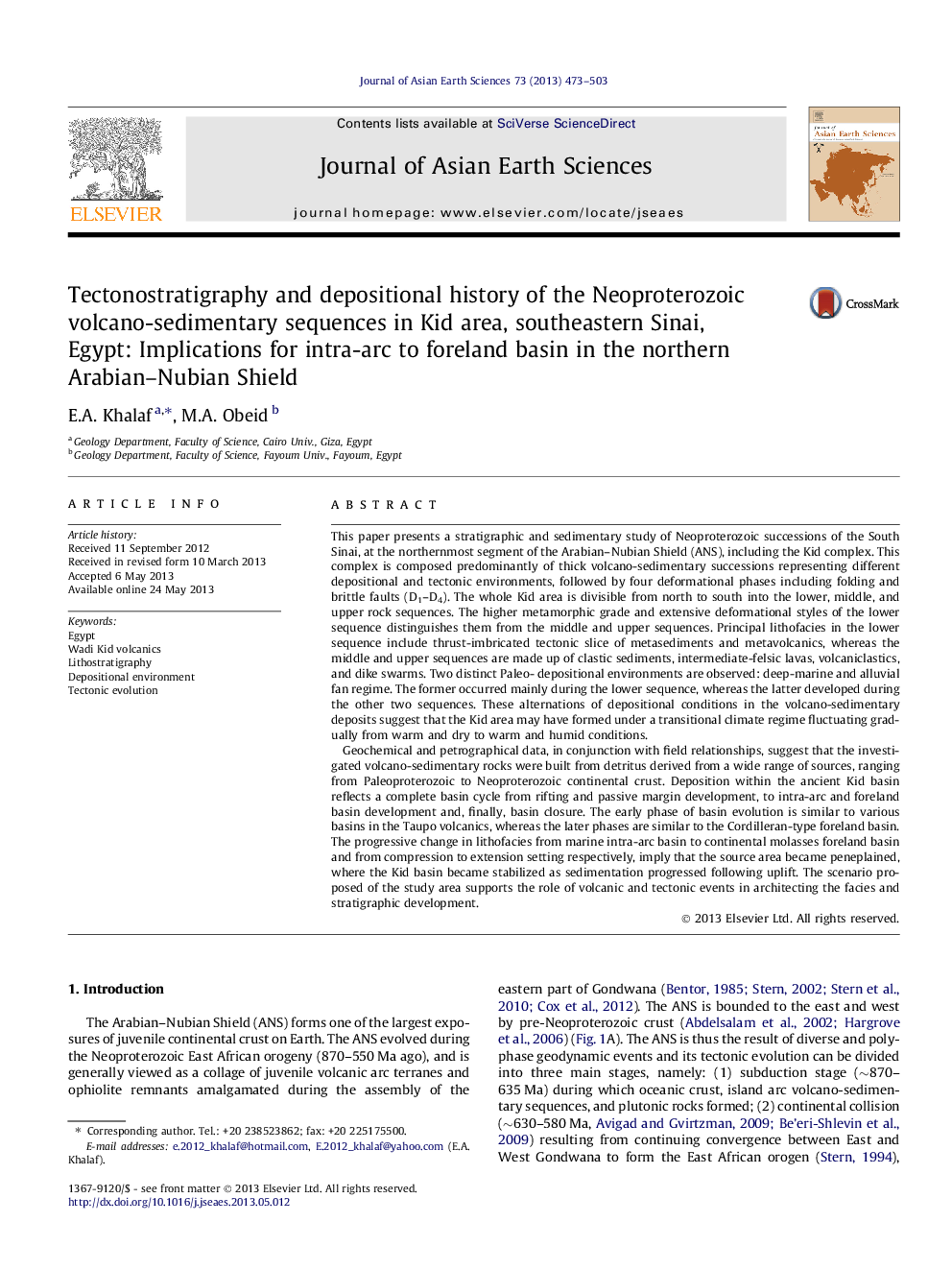| Article ID | Journal | Published Year | Pages | File Type |
|---|---|---|---|---|
| 6444535 | Journal of Asian Earth Sciences | 2013 | 31 Pages |
Abstract
Geochemical and petrographical data, in conjunction with field relationships, suggest that the investigated volcano-sedimentary rocks were built from detritus derived from a wide range of sources, ranging from Paleoproterozoic to Neoproterozoic continental crust. Deposition within the ancient Kid basin reflects a complete basin cycle from rifting and passive margin development, to intra-arc and foreland basin development and, finally, basin closure. The early phase of basin evolution is similar to various basins in the Taupo volcanics, whereas the later phases are similar to the Cordilleran-type foreland basin. The progressive change in lithofacies from marine intra-arc basin to continental molasses foreland basin and from compression to extension setting respectively, imply that the source area became peneplained, where the Kid basin became stabilized as sedimentation progressed following uplift. The scenario proposed of the study area supports the role of volcanic and tectonic events in architecting the facies and stratigraphic development.
Related Topics
Physical Sciences and Engineering
Earth and Planetary Sciences
Geology
Authors
E.A. Khalaf, M.A. Obeid,
